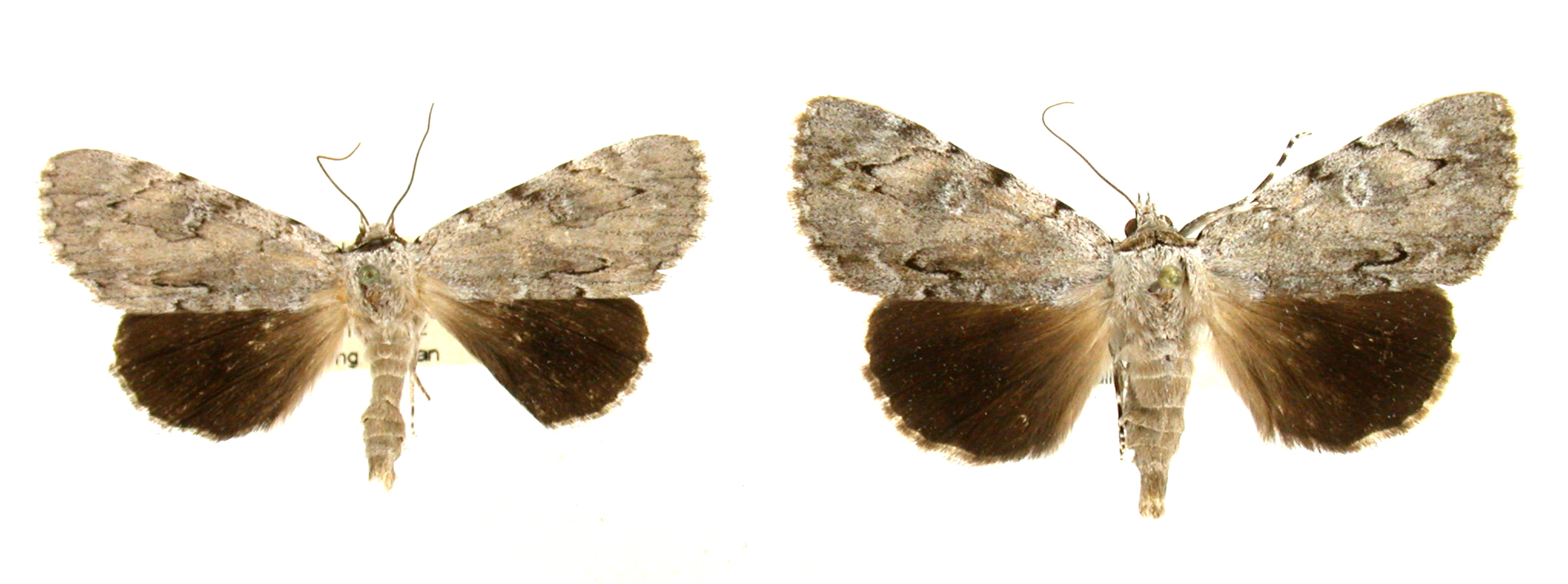
view caption
Left (male) July 8-10, 2002, Haywood County, J.B. Sullivan. Right (female) June 15, 2004, Swain County, J.B. Sullivan | 
view caption
Catocala miranda, top: male (left) July 8-10, 2002, Haywood County, J.B. Sullivan; female (right) June 15, 2004, Swain County, J.B. Sullivan. Catocala orba, bottom: July 3, 2005, Carteret Co., J.B. Sullivan |